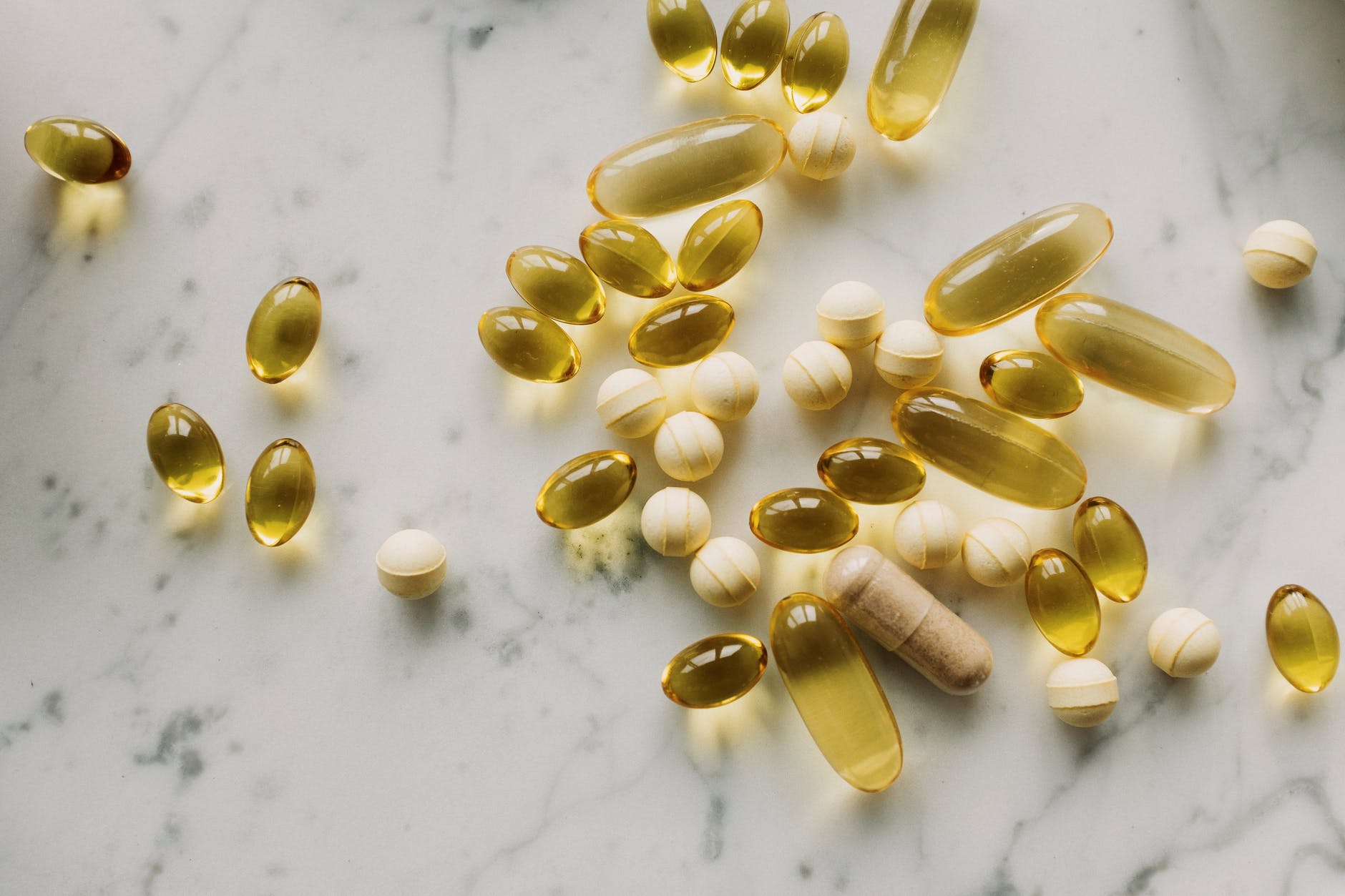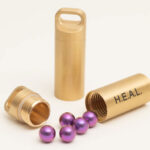Updated 10/8/23; Originally posted 6/5/22
Omega-3 fatty acids are all the rage these days – but why? For many of us modern-day humans, the omega-3 fatty acid content of our body’s cells makes a world of difference when it comes to overall wellness and disease prevention including stroke, cardiovascular disease, arthritis, brain dysfunction, and more. Omega-3 benefits abound!
Anyone who is looking to feel better not older will want to maintain a nicely high omega-3 fatty acid level through food and supplementation. But why? This article explains what they are and why they are important, why you might be low, how to check your levels, and how to maintain healthy levels without creating stress.
Table of Contents:
- The Different Types of Omega Fatty Acids
- 7 Health Benefits of Omega-3 Fats
- What is an Omega-3 Index?
- Optimal Omega-3 Index For Wellness
- Discover Your Omega-3 Index With a Blood Test
- Eating to Raise Your Omega-3 Level
- Zoa’s Recommended Omega-3 Supplements
- How to Take Your Omega-3 Supplements
- Additional Reading
The Different Types of Omega Fatty Acids
Fatty acids are simply long chains of carbon molecules with a methyl group on one end. The length of the chain is indicated by the number in the name – Omega-3 has a tail 3 units long. Depending on the tail length, the omegas can do different tasks and go different places in the body. Saturated fats are rigid and stack well to make strong structures. Unsaturated fats are bendable and make those structures deformable and resilient.
- Omega-3 ~ Omega-3s are the darlings of the fatty acid world because they are incredibly beneficial to the body and also hard to obtain from modern food – particularly if you eat a Standard American Diet (which you should not if you want to feel better not older). They are polyunsaturated fats with short chains (hence the “3” in the name” that keep your engine humming beautifully.
- Omega-6 ~ Omega-6s are polyunsaturated fats found in seed oils. None of the omega fatty acids are bad, but omega-6 sometimes is associated with “bad” simply because your body and diet have too much omega-6 and not enough of the other omegas – particularly omega-3.
- Omega-7 ~ This monounsaturated fat can be made in your body but that does not mean you make enough for overall health. The most common Omega-7 is palmitoleic acid which is plentiful in sea buckthorn (this happy orange berry is also rich in vitamin C), macadamia nuts, and olive oil. This is a newer kid on the omega block and does not have a lot of scientific studies around it.
- Omega-9 ~ Omega-9s are good guys for your body too. You can make them if needed, but its much more enjoyable to get yours from the oleic acid in high quality olive oil, almond butter, and cashews. As a monounsaturated fat, Omega-9s help lower your LDL cholesterol level and improve your heart health. There is little need to supplement these when you have a good-for-you diet.
7 Health Benefits of Omega-3 Fats
DHA and EPA are the most well known omega-3 fatty acids and they come from fish sources. They are technically not “essential” because your body can make them – in theory.

ALA is the plant based omega-3 fatty acid and must be converted into EPA and DHA by your body before it can be actually used. This ALA-to-EPA/DHA conversion process is inefficient at best and for some of us (for genetic reasons) barely a usable option. Most of us need to purposely seek out sources of EPA and DHA in order to create optimal health and longevity. But why? What do Omega-3 fatty acids do?
1: Omega-3’s for Brain Function
DHA is hugely prevalent in the human brain and is crucial for proper brain development in utero, in the first months of baby life, and as we age to maintain youthful brain function and memory.
2: Omega-3’s for Immunity
Both DHA and EPA activate the immune system in a way that reduces chronic inflammation and improves immune response to new threats.
3: Omega-3’s for Asthma Symptoms
High omega-3 levels are connected with lower asthma symptoms – particularly when combined with an appropriately high level of vitamin D.
4: Omega-3’s for Blood Sugar Problems
Omega-3s help with lowering triglycerides, shift how you metabolize carbohydrates, and improve your body’s ability to use insulin.
5: Omega-3’s For Healthy Eyes
DHA is highest in your eyes and is an important nutrient for preventing macular degeneration, glaucoma, floaters, and dry eyes.
6: Omega-3’s to Lower Inflammation
DHA lowers inflammation by discouraging inflammation signalling molecules from agitating every cell they bump into during their short lifetimes. DHA is like the calm adult taming the strong emotions of a toddler.
EPA inside a cell keeps the interior from having an intense response to the inflammatory signalling molecules banging on the outside of the cell. EPA is like the calming music in your room during a storm outside.
7: Omega-3’s for Red Blood Cell Health
DHA keeps cell walls fluid and flexible so that nutrients can get in and toxins can get out. Flexible red blood cell walls ensure that the red blood cells can easily slide through the tiniest capillary tube and through the openings in those capillaries to get in and out to the rest of the body.
Red blood cells mature to different sizes as measured by the RDW (Red blood cell Distribution Width) from your CBC blood test. Low omega-3 levels result in red blood cells not fully maturing and larger RDW results. Note: RDW is also affected by your ability to methylate – one of your Liver’s Phase 2 Detox processes.
What is an Omega-3 Index?
The Omega-3 Index is a measure of the health of your cells based on the fat content of the cell walls. Cell walls are made of fatty acids – whatever types of fatty acids are floating around in the body to be used. The Omega-3 Index measures the fat composition of the walls of your red blood cells because 1) they are easy to stick onto a paper card (a magic anti-oxidant rich card) and because 2) they are more representative of your disease risk than the omega levels in the liquid blood plasma.
Studies have shown that the heart cells have similar fat compositions to red blood cells which is good because who wants to put a piece of your heart onto a paper card or microscope slide – no matter how fancy they are? Other studies have shown that all the organs, bones, and other tissues in the body have omega-3 contents that match the red blood cells. That means the Omega-3 Index is a terrific biomarker for the entire body.
Optimal Omega-3 Index For Wellness
In multiple clinical studies, an Omega-3 index of 8% or higher is associated with a 90% reduction in your risk of having a severe cardiac event like a heart attack. In fact, that is how the Omega-3 Index was created and the optimal range selected! One study actually collected blood samples from participating doctors (you know they are the worst patients!) and held them for 17 years. If someone had a heart attack in that 17 year time period, they measured the omega 3 in their frozen blood. The Omega-3 Index was predictive. Low omega-3 levels mean a greater risk of having a future heart attack.
Unfortunately, the average Omega-3 Index for Americans over the age of 20 is 4.8%. Oh so low! In Japan, where coronary artery disease is less common and people live longer the average Omega-3 Index is 9-10%. Mine was 9.93% when I tested recently. What is yours?
Discover Your Omega-3 Index With a Blood Test
Testing your current level of omega-3 fatty acids in your blood is an easy thing and I believe it should be a part of your annual health assessments for disease prevention. The Omega-3 Index measures the proportion of EPA and DHA to all the other fatty acids in your red blood cells.
From a simple finger prick blood test, you can discover your Omega-3 Index – a rating of your omega-3 levels over the past 3-4 months (like HbA1C is a measure of your blood sugar level for the last 3 months).

For optimal wellness, your Omega-3 Index should be in the range of 8-12%. Depending on the level of report you choose, you can receive the index but also the actual levels of the various types of fatty acids in your blood. If you test your Omega-3 Index and find your levels low, focus on shifting your diet or supplementation plan for the better and test your level again after 3 months.
Eating to Raise Your Omega-3 Index
You can bring your Omega-3 Index up in a combination of 2 ways. First, you can shift to eating foods that contain less omega-6 fats. Second you can increase your intake of omega-3 fats. Since omega-6 fats are pro-inflammatory and damage your body while omega-3 fats are anti-inflammatory and help heal your body – don’t both steps sound worthwhile? The nice thing about the Omega-3 Index report is that it tells you whether you need to raise your Omega 3 intake or lower your Omega 6 intake or both.
You will want a way to monitor your Omega intake as you make changes. I suggest you use Cronometer to log your foods and see what each food is providing you on a daily basis. Try logging 3 days in a row and see what your patterns are. Make some adjustments, and log again. Enjoy the process!
Downgrading Your Omega-6 Foods
Omega-6 oils are everywhere in the processed food and restaurant worlds because they are inexpensive and shelf-stable. Your efforts to reduce your intake of omega-6s will therefore involve a shift away from processed foods and towards natural, homemade foods.
If you have already made this shift and still have a high omega-6 intake, we can look at which specific foods might be giving you the most omega-6s: processed vegetable and seed oils like canola, corn, sunflower, soybean, and safflower oils.
Choose instead: grass-fed butter, walnuts, olive oil, avocado, coconut oil, grass-fed meats, and cold-water fish.

If you would like help adjusting your diet to include more anti-inflammatory foods and to better support a low Omega-6 intake, I would love to work with you!
Upgrading Your Omega-3 Foods
The challenge to increasing your omega-3 fat intake is that omega-3 fats are present at low levels in a wide variety of foods and high levels in only a few foods.
If you already eat cold water fish like salmon and herring or sardines as part of your weekly diet and you want to increase your seafood frequency, that will help raise your Omega-3 Index!
If you eat organ meets weekly or more (brain! heart! liver!), then increasing how often you eat those foods will raise your Omega-3 Index level too.

If your seafood intake is all about orange roughy, cod, canned light chunk tuna, and tilapia – those are not providing much in the way of omega-3s so supplementation is likely needed! If you are not a fish eater, then supplementation is definitely the way to go for you.
Zoa’s Recommended Omega-3 Supplements
At Zen and Vitality, you can purchase any of my suggested high quality omega-3 supplements. Did you know that if you break open a fish oil capsule it should smell and taste delicious? If your inexpensive fish oil supplement is full of oxidized (rancid) oil, your inflammation level will go up not down! If you feel that neither of these is an option for you – I want to hear from you please! Either of these could be part of your Custom Supplement Subscription available to current clients located in Southern Maryland or anywhere in the USA.
Citrus Omega-3 Squeeze
For those who dislike the fishy after-burps of traditional omega-3 supplements or who can not swallow pills, this citrus flavored Omega-3 gel in a squeeze bottle should be perfect! Formulated by a brain disorder specialist, this supplement provides the perfect blend of EPA and DHA to support health of both body and mind. Great for kids or those who constantly “forget” to take the pills.
Super Omega-3 Plus
Super Omega-3 Plus is a “big pill” of fish and krill oil (in 3 different forms) with extras to optimize your health and leave you with lemon not fish on your breath. The super-antioxidant astaxanthin supports mitochondrial health in your eyes and heart. The olive extract brings heart healthy polyphenols. Sesame lignans help with metabolism of fats and encourage cholesterol reduction.
Spirulina
For those sensitive to fish oils, you can eat what the fish eat – Algae! Algae can be grown sustainably providing an incredibly rich source of nutrients including Omega-3 fats. Spirulina is the champion here. Try it!
HEAL Capsule
Another option would be to wear a HEAL capsule and reap the benefits of the contained omega-3 frequencies in addition to a wide array of other minerals, vitamins, hormones, and other healing factors.
How much Omega-3s should you take as a supplement?
That depends on how much of a change you are looking for and your starting point! The folks at OmegaQuant have an easy to use omega-3 calculator that will suggest an amount to supplement with based on your specific situation.
When should you take your Omega-3 supplement?
It is best to split up your Omega-3 supplement so that you have some with each meal – particularly if gut health and healing is a focus for you. Your body much prefers a constant supply of a low level of nutrients rather than a huge dose at once daily.
How to Take Your Omega-3 Supplements
If you are going to pay for an omega-3 supplement and spend the mental effort to remember to take it (!), you should want to make sure that you are absorbing and using your omega-3s. For optimal absorption of your omega-3 supplement, use the following guidelines:

- Take your supplement with a bit of fat – omega 3s are fats and will be absorbed more easily when taken with food containing dietary fats. I take mine with my full fat homemade goat yogurt with chia seeds or with my Danger coffee or Purity Coffee blended with butter and C8 MCT oil.
- Be consistent – you can not “cram” your omega-3s into your cells for improved health with megadosing occasionally. You have to provide consistent omega-3 supplies to be used in cell walls because cells are constantly being repaired and replaced.
- Split your supplement timing – take half in the morning and half in the evening. In the morning it should be easy to combine your omega-3 supplement with other fat soluble vitamins (like Vitamin D) and some fat in your first meal. In the evening, with your last meal including some fat, you will benefit the most from the anti-inflammatory nature of omega-3s during the healing phases of sleep and feel better in the morning!
You might be interested in other posts with these tags:
Additional Reading:
- https://omegaquant.com/whats-the-best-time-to-take-your-fish-oil-supplement/
- https://chrismasterjohnphd.com/lite-videos/2018/08/07/really-need-taking-fish-oil/
- https://omegaquant.com/a-higher-omega-3-index-linked-to-better-asthma-control/
- https://www.foundmyfitness.com/episodes/omega-3-heart
- https://wellnessmama.com/health/fish-oil-omega-3/
- https://omegaquant.com/what-do-omega-3s-do/
- https://daveasprey.com/dha-benefits/









